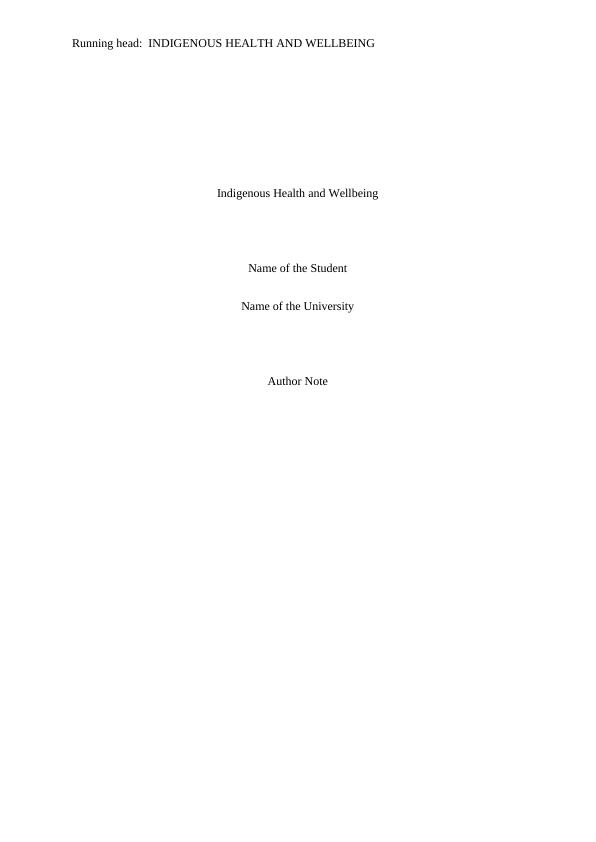Indigenous Health and Wellbeing Essay 2022
To explore the impact of the ‘Closing the Gap’ policy on Aboriginal & Torres Strait Islander People’s health outcomes.
9 Pages2222 Words19 Views
Added on 2022-09-21
Indigenous Health and Wellbeing Essay 2022
To explore the impact of the ‘Closing the Gap’ policy on Aboriginal & Torres Strait Islander People’s health outcomes.
Added on 2022-09-21
ShareRelated Documents
End of preview
Want to access all the pages? Upload your documents or become a member.
Indigenous Health and Well-being Report 2022
|9
|2261
|27
Closing The Gap (CTG) Policy and its Significance to Indigenous Australians
|9
|2346
|488
Contemporary Indigenous Health and Wellbeing
|10
|2616
|445
Contemporary Indigenous Health and Wellbeing
|8
|1998
|199
Closing the Gap Policy Answer 2022
|10
|2616
|17
Assignment about Indigenous Health 2022
|9
|2230
|33



